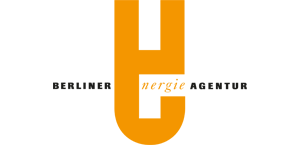Berliner Energieagentur GmbH
On the initiative of the Berlin House of Representatives, the Berliner Energieagentur GmbH (BEA) was founded in 1992. As a modern energy service company, BEA develops and realises innovative projects that reduce high energy costs as well as CO2 emissions, building renovation projects and target group specific information and motivation campaigns for greater energy efficiency and climate protection as part of its business divisions Consulting, Contracting and International Know-How Transfer. Shareholders are the State of Berlin, Vattenfall Europe Wärme AG, GASAG Berliner Gaswerke AG and KfW Bankengruppe in equal shares.
Short description of the project contribution
Together with the Borderstep Institute for Innovation and Sustainability, Dr. Riedel Automatisierungstechnik GmbH and the DAI lab of the Technical University of Berlin, the Berliner Energieagentur (BEA) is researching a combination of smart building technology, Power-to-Heat technology and heat storage (workstream 8.2.) in two Berlin residential districts. The outset is to study how the districts and their different energy infrastructure can respond to the intermittent supply of wind and solar power in a flexible manner.
The Berliner Energieagentur (BEA) operates over 150 decentralised energy generating units in Berlin and Brandenburg, of which 80 are equipped with CHP installations. As an energy service provider, the company boasts extensive knowledge and previous achievements in connection with the operating mode and flexibilisation of CHP units.
In the WindNODE sub-project (workstream 7.2) in which the BEA participates, the energy technology of two Berlin districts is further developed and tested. In the first district, a smart building concept is used that is tested in a residential area of the Wohnungsbaugenossenschaft Zentrum in Prenzlauer Berg. A digital district management system determines the local energy consumption of 224 households and flexibly adjusts the output of one of the cogeneration (CHP) units operated by the BEA accordingly. The WindNODE sub-project tests how the energy supply in the residential district can be efficiently organised with intermittent electricity generated by wind turbines. When a lot of electricity from renewable energy sources is available on the power grid, the CHP unit shuts down. The energy required in the district should then be covered by using renewable energy in connection with Power-to-Heat solutions and buffer storage solutions as well as by using the storage capability of the buildings in the district.
In another Berlin district in Berlin-Schöneberg, a similar model is tested with the participation of BEA. Here, wind power should be used in over 34 connected buildings with a total of 365 residences and directly be converted to heat if this is advantageous from an economic and system-technical point of view. The district is also supplied by a modular CHP unit of the BEA (48 kWel and 91 kWth) as well as a peak load boiler. However, no smart building technology is used. For this reason, an additional Power-to-Heat installation should be made available in the Schöneberg residential quarter. This way, the flexibilisation of the energy loads can be tested particularly well in this district, with a focus on hot water storage solutions.
In both districts, it should be tested how the flexibilisation of existing electricity and heat supply systems can be successful.
With the start of the WindNODE sub-project, the analysis of district and grid requirements for demand response management will begin in the two Berlin districts. Furthermore, relevant flexibility requirements in the overall energy system are analysed and the specific physical parameters of the buildings and technical parameters of the installations are reflected in both the Berlin districts involved and the respective CHP systems. On this basis, enhanced models for flexible load management should be tested in the districts. To this end, the existing infrastructure (CHP and smart building technology) of the district in Prenzlauer Berg is complemented with technical solutions to improve its capability for demand response. Starting in the spring of 2018, the main part of the project begins, namely the practical test of the concept.
The flexibilisation of the energy supply in both districts concerned by using the new installation technology can currently only be tested in specific application cases. Finally, the operating modes of the power stations in the districts have to be aligned with a view to stabilising the power grid. The knowledge gained in the field of the control of power stations to support the grid can be used to derive forecasts for load distribution and flexibilisation options for the energy management system. The results obtained so far can then be demonstrated at visitor sites. For this purpose, the BEA and the DAI lab of TU Berlin will present visual models of the projects in their offices. The BEA will develop an app that offers information to end consumers as well as statistics on flexible prices.
In the final phase of the project, the results will be evaluated and brought together in new business and billing models for district solutions. For the overall assessment, the findings of other WindNODE model regions and sub-projects will also be included.
